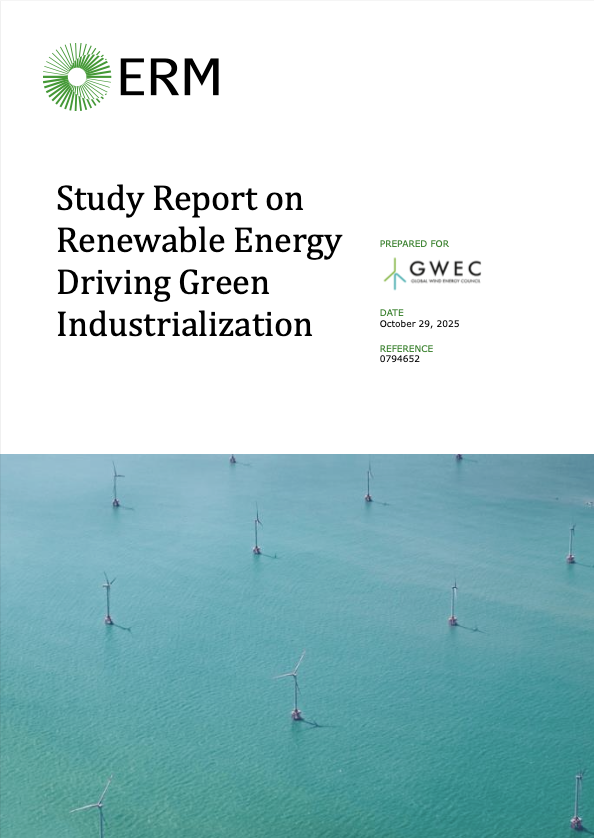Study Report: Renewable Energy Driving Green Industrialisation

OFFSHORE WIND CAN DELIVER 6% OF BRAZIL'S ENERGY GENERATION BY 2025

Overview

Key Findings
The following key findings outline Brazil’s projected energy transition pathway, the mechanisms supporting renewable growth, and the emerging role of offshore wind in driving green industrialisation and energy security.
-
Brazil is on a path to climate neutrality by 2050, with targets to cut greenhouse gas emissions by 59% by 2035 and 67% by 2050 compared to 2005 levels.
-
Electricity demand is projected to triple by 2050, reaching 2,100 TWh, requiring a 50% increase in installed generation capacity to sustain growth.
-
Offshore wind could contribute around 32 GW ( around 6.6%) of total generation capacity by 2050, establishing itself as a cornerstone of Brazil’s clean energy expansion.

Powering Growth While Cutting Emissions
Brazil’s energy transition is unfolding at a critical intersection of industrial expansion, climate ambition, and technological innovation. With its Nationally Determined Contribution (NDC), the country has committed to deep decarbonisation, aiming to reduce emissions by 59% by 2035 and achieve climate neutrality by 2050.
Policy frameworks such as the Regulated Carbon Market, Climate Plan and CBAM are expected to stimulate investment and accelerate the shift toward renewables.
Meanwhile, the National Energy Plan 2050 (PNE 2050) projects that electricity demand could reach 1,600 TWh by 2040 and 2,100 TWh by 2050, nearly three times the 2015 baseline. Meeting this surge in demand while maintaining a renewable-dominant matrix will be central to sustaining Brazil’s low-carbon industrial growth.

Offshore Wind as The Next Frontier for Green Industrialisation
As Brazil’s renewable mix evolves, offshore wind power is emerging as a strategic pillar of future energy security and industrial competitiveness. With vast coastal resources and strong wind conditions, Brazil is uniquely positioned to harness this potential at scale. By 2050, offshore wind could provide approximately 6.6% of total installed capacity, or around 32 GW, according to projections from national and international energy assessments.
Beyond electricity generation, offshore wind offers a foundation for green hydrogen production, industrial electrification, and job creation, reinforcing Brazil’s role as a clean energy hub for Latin America. To unlock this opportunity, collaboration between government, industry, and financiers will be essential, particularly through blended finance models, grid modernisation, and long-term policy certainty.
Contacts

Media Inquiries
Alex Bath
Communications Director
-
alex.bath@gwec.net
